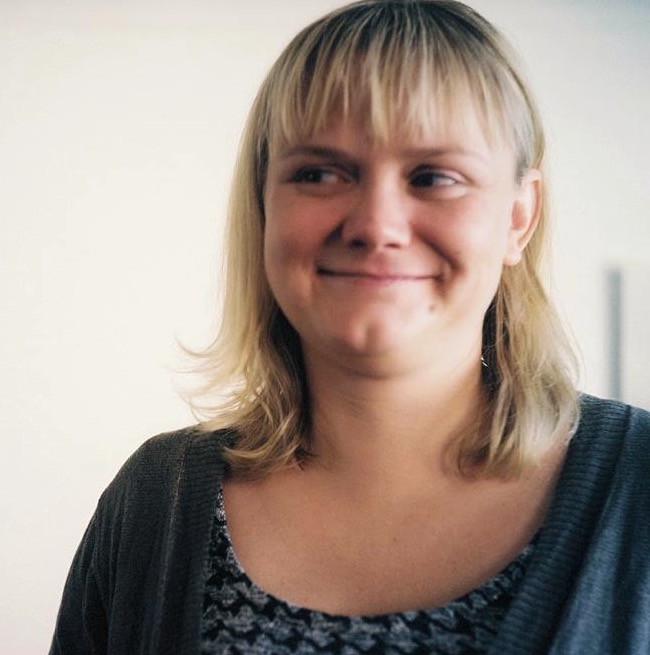“Were my parents conspiring with aliens behind my back?” asks artist Monira Al Qadiri in her first UK solo exhibition, The Craft. The Amsterdam-based Kuwaiti artist was born in Senegal to diplomat parents and educated in Japan. Comprising a semi-autobiographic installation and video, The Craft draws inspiration from the fantasies she and her sister pondered as kids.
Using this element of childish ridicule and humour as Trojan Horse, The Craft has more serious topics though. Al Qadiri addresses sensitive matters with an elegant slight of pop culture hand by packaging her critique of international diplomacy in the rhetoric of science fiction and conspiracy theories.
 Nestled in an installation of a classic American diner, a VHS video draws on her childhood narratives to posit the world of diplomacy as an alien conspiracy, with its rituals and culture as otherworldly. Especially against the current climate of nationalism and political populism, there is both a quaint nostalgia for lost innocence and a worldliness that emphasises that government conspiracy theories and distrust have been around since at least the 1960s and 1970s. Reads the press release:
Nestled in an installation of a classic American diner, a VHS video draws on her childhood narratives to posit the world of diplomacy as an alien conspiracy, with its rituals and culture as otherworldly. Especially against the current climate of nationalism and political populism, there is both a quaint nostalgia for lost innocence and a worldliness that emphasises that government conspiracy theories and distrust have been around since at least the 1960s and 1970s. Reads the press release:
 The exhibition affirms Al Qadiri's distinctive oeuvre. The young artist effortlessly glided between previous work that has included 3D-printed oil drill bits displayed as precious jewels, performance videos that explore the fluidity and toxicity of gender roles, and research into the aesthetics of sadness in Middle Eastern poetry, music, art and religious practices.
The exhibition affirms Al Qadiri's distinctive oeuvre. The young artist effortlessly glided between previous work that has included 3D-printed oil drill bits displayed as precious jewels, performance videos that explore the fluidity and toxicity of gender roles, and research into the aesthetics of sadness in Middle Eastern poetry, music, art and religious practices.
Her armour? “I noticed that being funny allowed me to get away with a lot of things,” she says.

 The Craft shows at Gasworks in London until September 10, before moving to Sursock Museum in Lebanon from November 3 to January 8, 2018.
The Craft shows at Gasworks in London until September 10, before moving to Sursock Museum in Lebanon from November 3 to January 8, 2018.
Using this element of childish ridicule and humour as Trojan Horse, The Craft has more serious topics though. Al Qadiri addresses sensitive matters with an elegant slight of pop culture hand by packaging her critique of international diplomacy in the rhetoric of science fiction and conspiracy theories.

Monira Al Qadiri, The Craft, 2017. VHS video, colour with sound, 16 min. Co-commissioned by Gasworks and the Sursock Museum. Courtesy of the artist. Photo: Andy Keate.
“Pop culture, futuristic architecture, junk food, dream readings, alien abductions, geopolitics, diplomacy, war and peace: all of these once solid staples of modern life become tainted by a general sense of distrust, which overshadows everything. Like a ticking time bomb placed at the centre of the nuclear family unit, suspicion reaches a crescendo when the protagonist discovers that the ‘American Century’ has finally ended.”

Monira Al Qadiri, The Craft research image, 2017. Courtesy of the artist.
Her armour? “I noticed that being funny allowed me to get away with a lot of things,” she says.

Monira Al Qadiri, The End, 2017. Polystyrene model, levitation module, sound. Co-commissioned by Gasworks and the Sursock Museum. Courtesy of the artist. Photo: Andy Keate.

Monira Al Qadiri, Omen, 2017. Neon sign. Co-commissioned by Gasworks and the Sursock Museum. Courtesy of the artist. Photo: Andy Keate.
 Monira Al Qadiri, The End, 2017. Polystyrene model, levitation module, sound. Co-commissioned by Gasworks and the Sursock Museum. Courtesy of the artist. Photo: Andy Keate.
Monira Al Qadiri, The End, 2017. Polystyrene model, levitation module, sound. Co-commissioned by Gasworks and the Sursock Museum. Courtesy of the artist. Photo: Andy Keate.
 Monira Al Qadiri, The Craft, 2017. Installation view. Co-commissioned by Gasworks and the Sursock Museum. Courtesy of the artist. Photo: Andy Keate.
Monira Al Qadiri, The Craft, 2017. Installation view. Co-commissioned by Gasworks and the Sursock Museum. Courtesy of the artist. Photo: Andy Keate.
 Monira Al Qadiri, The Craft, 2017. VHS video, colour with sound, 16 min. Co-commissioned by Gasworks and the Sursock Museum. Courtesy of the artist. Photo: Andy Keate.
Monira Al Qadiri, The Craft, 2017. VHS video, colour with sound, 16 min. Co-commissioned by Gasworks and the Sursock Museum. Courtesy of the artist. Photo: Andy Keate.
 Monira Al Qadiri, The Tragedy of Self (installation), 2009. Photographs, wooden panels, video, 4 x 4 x 1.5 m. Courtesy the artist.
Monira Al Qadiri, The Tragedy of Self (installation), 2009. Photographs, wooden panels, video, 4 x 4 x 1.5 m. Courtesy the artist.
 Monira Al Qadiri, Muhawwil (Transformer), 2014. 4-channel video installation with wooden structure. 4 x 3 x 4 meters. Courtesy the artist.
Monira Al Qadiri, Muhawwil (Transformer), 2014. 4-channel video installation with wooden structure. 4 x 3 x 4 meters. Courtesy the artist.


